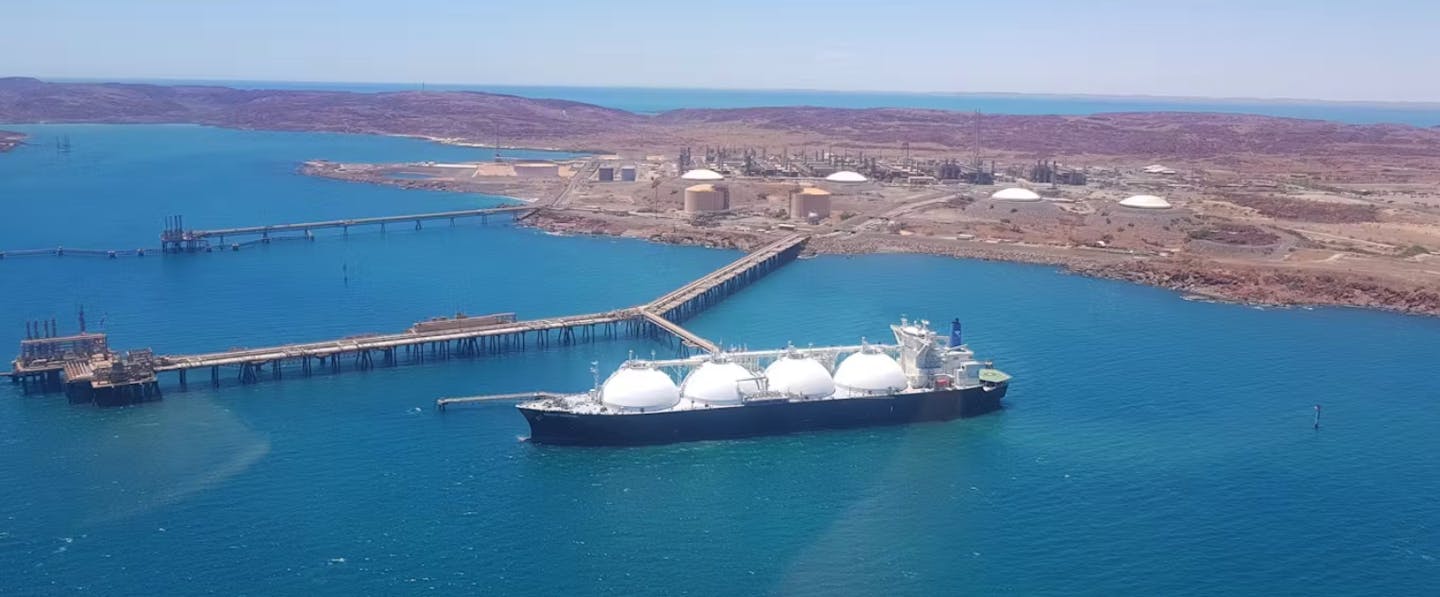
Global warming from Woodside’s massive Scarborough gas project off Western Australia would lead to 484 additional heat-related deaths in Europe alone this century, and kill about 16 million additional corals on the Great Barrier Reef during each future mass bleaching event, our new research has revealed.
The findings were made possible by a robust, well-established formula that can determine the extent to which an individual fossil fuel project will warm the planet. The results can be used to calculate the subsequent harms to society and nature.
The results close a fundamental gap between science and decision-making about fossil fuel projects. They also challenge claims by proponents that climate risks posed by a fossil fuel project are negligible or cannot be quantified.
Each new investment in coal and gas, such as the Scarborough project, can now be linked to harmful effects both today and in the future. It means decision-makers can properly assess the range of risks a project poses to humanity and the planet, before deciding if it should proceed.

Every tonne of CO₂ matters
Scientists know every tonne of carbon dioxide (CO₂) emissions makes global warming worse.
But proponents of new fossil fuel projects in Australia routinely say their future greenhouse gas emissions are negligible compared to the scale of global emissions, or say the effects of these emissions on global warming can’t be measured.
The Scarborough project is approved for development and is expected to produce gas from next year. Located off WA, it includes wells connected by a 430km pipeline to an onshore processing facility. The gas will be liquefied and burned for energy, both in Australia and overseas. Production is expected to last more than 30 years. When natural gas is burned, more than 99% of it converts to CO₂.
Woodside – in its own evaluation of the Scarborough gas project – claimed:
it is not possible to link GHG [greenhouse gas] emissions from Scarborough with climate change or any particular climate-related impacts given the estimated […] emissions associated with Scarborough are negligible in the context of existing and future predicted global GHG concentrations.
But what if there was a way to measure the harms? That’s the question our research set out to answer.
A method already exists to directly link global emissions to the climate warming they cause. It uses scientific understanding of Earth’s systems, direct observations and climate model simulations.
According to the IPCC, every 1,000 billion tonnes of CO₂ emissions causes about 0.45°C of additional global warming. This arithmetic forms the basis for calculating how much more CO₂ humanity can emit to keep warming within the Paris Agreement goals.
But decisions about future emissions are not made at the global scale. Instead, Earth’s climate trajectory will be determined by the aggregation of decisions on many individual projects.
That’s why our research extended the IPCC method to the level of individual projects – an approach that we illustrate using the Scarborough gas project.
Scarborough’s harms laid bare
Over its lifetime, the Scarborough project is expected to emit 876 million tonnes of CO₂.
We estimate these emissions will cause 0.00039°C of additional global warming. Estimates such as these are typically expressed as a range, alongside a measure of confidence in the projection. In this case, there is a 66–100% likelihood that the Scarborough project will cause additional global warming of between 0.00024°C and 0.00055°C.
This additional warming might seem small – but it will cause tangible damage.
The human cost of global warming can be quantified by considering how many people will be left outside the “human climate niche” – in other words, the climate conditions in which societies have historically thrived.
We calculated that the additional warming from the Scarborough project will expose 516,000 people globally to a local climate that’s beyond the hot extreme of the human climate niche. We drilled down into specific impacts in Europe, where suitable health data was available across 854 cities. Our best estimate is that this project would cause an additional 484 heat-related deaths in Europe by the end of this century.

And what about harm to nature? Using research into how accumulated exposure to heat affects coral reefs, we found about 16 million corals on the Great Barrier Reef would be lost in each new mass bleaching. The existential threat to the Great Barrier Reef from human-caused global warming is already being realised. Additional warming instigated by new fossil fuel projects will ratchet up pressure on this natural wonder.
As climate change worsens, countries are seeking to slash emissions to meet their commitments under the Paris Agreement. So, we looked at the impact of Scarborough’s emissions on Australia’s climate targets.
We calculated that by 2049, the anticipated emissions from the Scarborough project alone – from production, processing and domestic use – will comprise 49% of Australia’s entire annual CO₂ emissions budget under our commitment to net-zero by 2050.
Beyond the 2050 deadline, all emissions from the Scarborough project would require technologies to permanently remove CO₂ from the atmosphere. Achieving that would require a massive scale-up of current technologies. It would be more prudent to reduce greenhouse gas emissions where possible.
‘Negligible’ impacts? Hardly
Our findings mean the best-available scientific evidence can now be used by companies, governments and regulators when deciding if a fossil fuel project will proceed.
Crucially, it is no longer defensible for companies proposing new or extended fossil fuel projects to claim the climate harms will be negligible. Our research shows the harms are, in fact, tangible and quantifiable – and no project is too small to matter.
In response to issues raised in this article, a spokesperson for Woodside said:
Woodside is committed to playing a role in the energy transition. The Scarborough reservoir contains less than 0.1% carbon dioxide. Combined with processing design efficiencies at the offshore floating production unit and onshore Pluto Train 2, the project is expected to be one of the lowest carbon intensity sources of LNG delivered into north Asian markets.
We will reduce the Scarborough Energy Project’s direct greenhouse gas emissions to as low as reasonably practicable by incorporating energy efficiency measures in design and operations. Further information on how this is being achieved is included in the Scarborough Offshore Project Proposal, sections 4.5.4.1 and 7.1.3 and in approved Australian Government environment plans, available on the regulator’s website.
A report prepared by consultancy ACIL Allen has found that Woodside’s Scarborough Energy Project is expected to generate an estimated A$52.8 billion in taxation and royalty payments, boost GDP by billions of dollars between 2024 and 2056 and employ 3,200 people during peak construction in Western Australia.
This article is republished from The Conversation, a nonprofit, independent news organization bringing you facts and trustworthy analysis to help you make sense of our complex world. It was written by: Sarah Perkins-Kirkpatrick, Australian National University; Andrew King, The University of Melbourne; Nicola Maher, Australian National University, and Wesley Morgan, UNSW Sydney
Read more:
- The disasters we talk about shape our priorities and determine our preparedness
- Climate tipping points sound scary, especially for ice sheets and oceans – here’s why there’s still room for optimism
- Since 2020, 4 of Australia’s natural World Heritage properties have deteriorated
Sarah Perkins-Kirkpatrick receives funding from the Australian Research Council
Andrew King receives funding from the Australian Research Council (Future Fellowship and Centre of Excellence for 21st Century Weather) and the National Environmental Science Program.
Nicola Maher receives funding from the Australian Research Council.
Wesley Morgan is a fellow with the Climate Council of Australia


 The Conversation
The Conversation
 Law & Crime
Law & Crime Associated Press Top News
Associated Press Top News Local News in South Carolina
Local News in South Carolina FOX News
FOX News Raw Story
Raw Story New York Post
New York Post Reuters US Business
Reuters US Business Cover Media
Cover Media AlterNet
AlterNet WBRC
WBRC Chicago Tribune Politics
Chicago Tribune Politics